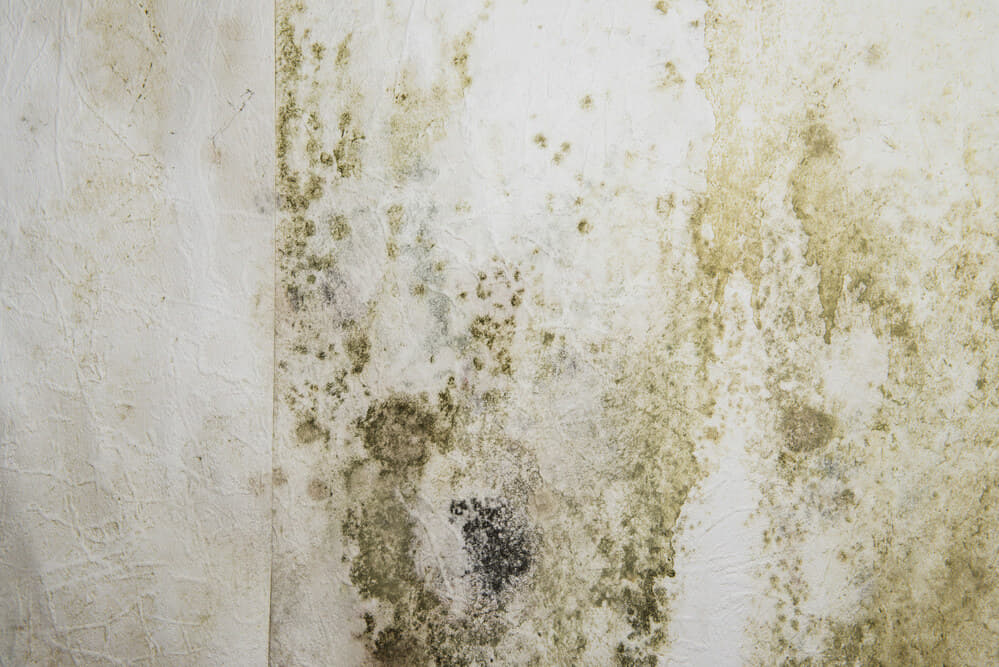Distinguishing Mold Growth from Stains & Other Common Discolorations

“Mold.” Whether it’s in reference to what is found in refrigerators or a basement, it’s a word that conjures up wrinkled noses and thoughts of health hazards. But how do you know that what you are looking at in your basement is mold and not rotting wood, faded stain, or a spray paint spritz gone awry? Although you should never touch what you are unsure of (in case it is mold), you can identify basement mold by sight and by knowing the condition of your basement/foundation.
Mold can be anywhere moisture is. It can form on air conditioners, ductwork, ceiling beams, clothes, floor joists, upholstery, and insulation as well as on numerous other things. It comes in different colors, including yellow, black, and green. It might look fuzzy, splotchy, smooth, or erratically placed. The only definitive way to tell if what you are looking at is hazardous basement mold is to hire a licensed mold remediator, such as Acculevel.
One clue is smell. Use your nose — but do not get too close, inhaling mold spores is dangerous. If your entire basement or an area smells musty, you likely have mold. If your basement or crawl space is damp, it’s pretty much certain to be mold.
Stains that look like glittery white powder on your concrete walls are probably efflorescence. This is dry mineral salt left behind when water flows through the pores in concrete. It is not hazardous, but it does mean you have waterproofing failure somewhere. Another product of nature is iron ochre, which appears as a rust-colored stain that is left behind when water flows through concrete.
So what should you do if you are unsure of a stain? The most important thing to remember is: Don’t touch it. If it is mold, touching can lead to health problems. It also disturbs the spores, which then will float on the air, attach to something else in the basement, and start spreading in that location. If spores get on your clothes, you will carry them back upstairs with you.
The only sure way to identify whether a stain is mold is to have a certified mold remediator take a look at it. He or she is trained on identification, testing, and removal of mold. After the basement contractor has removed the mold, you need to address how it got in your basement and foundation in the first place. Somewhere, you have waterproofing problems. This doesn’t mean your foundation is in danger of collapsing, but it does mean water is getting in, whether via the concrete or sealing problems with doors and windows.
There may not be an obvious leak or source, such as a weeping crack in the wall, but even if a repair isn’t required, you may need a drainage system installed. For humidity in the air, a dehumidifier and fans can help reduce the airborne moisture. However, that moisture will keep returning if you don’t address the core issue.
A foundation and basement expert can find the source of any basement floor leak and will help you determine the best route to take to keep your foundation and basement as dry as possible. If cracks in the concrete are what’s letting in the moisture and causing mold, have them filled. Correct bowed walls with extra support, and if you live in an area prone to flooding, install one or more sump pumps with backup batteries.
Acculevel is a certified mold remediator. We know what every type of basement mold looks like, and we have the expertise to find and eradicate it. Family-owned Acculevel handles waterproofing for basements, foundations, and crawl spaces in every type of home. Honest and trustworthy, we never recommend unnecessary repairs, and we offer free in-home estimates without pressuring you to hire us. To schedule an appointment, give our staff a call at (866) 669-3349 or email us at [email protected].
